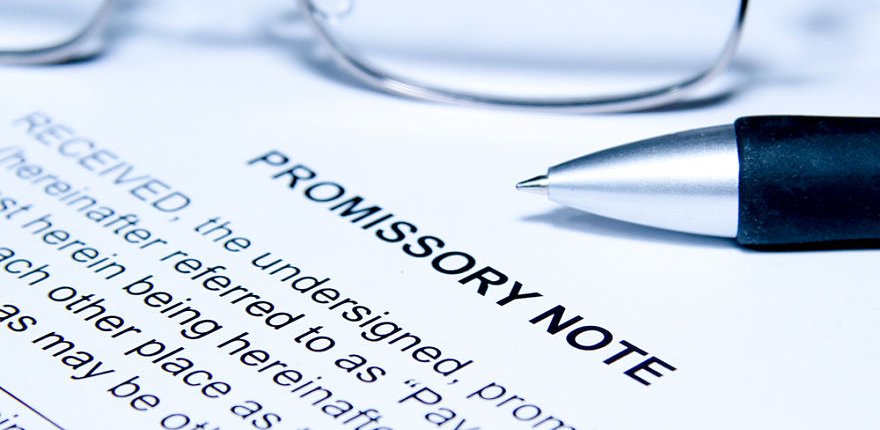As its name implies, a promissory note is a written promise to repay someone. It is a legal document that is commonly used for mortgages, car loans, student loans, business loans, and even personal loans between friends or family members.
A promissory note falls somewhere in between an IOU and a loan agreement. They are legally binding, but they do not offer recourse for non-payment of the loan.
However, if you’re not careful about how you create or execute your note, it may end up being considered invalid.
Keep reading to better understand what mistakes to avoid so that your promissory note will be considered as a valid legal document.
Read more:Types of Promissory Notes
Is a Promissory Note Legally Binding?
A Promissory note is a contract, which means that it is legally binding. However, it must include certain conditions to ensure it is enforceable.
As with any other common law contract, a promissory note should contain all the necessary terms and conditions that are part of the agreement between the two parties that are involved.
A promissory note must include the date of the loan, the dollar amount, the names of both parties, the rate of interest, any collateral involved, and the timeline for repayment. When this document is signed by the borrower, it becomes a legally binding contract.
The lender may also sign the note, but unlike loan agreements, they are not usually required to do so. However, the lender may require the borrower to sign the document in the presence of a notary. This helps to guarantee the signature.
Promissory notes can also be secured by collateral, but even if they aren’t, they are still legally binding.
However, if a borrower defaults on a note and does not repay, the lender can legally possess any property that the individual promised as collateral.
What Can Void a Promissory Note?
There are some circumstances that can cause this legal document to become null and void. Here are some potential erros to avoid.
Not being signed by the borrower
In order for a promissory note to be legally binding, it must include the signature of the borrower.
You generally are not required by law to have the signatures witnessed or notarized. However, these steps can add a layer of protection – particularly if the two parties do not know and trust each other.
Unclear clauses
If the clauses or the terms of a promissory note are not written clearly, the contract may not be valid. You can ensure you use the correct terminology by downloading a template for a promissory note from Lawdistrict.com.
Unfair terms
Itmust also offer fair terms in order for it to be legally binding. For example, most states limit the amount of interest that can be charged on different kinds of loans. Therefore, an unusually high interest rate could invalidate a promissory note.
Losing the original note or a copy
A third factor that could invalidate a promissory note is if the original document is lost or if it has been altered without both parties agreeing (and signing off) to the changes.
The original copy is usually held by the lender, but the borrower should also keep a copy of the signed document. If the borrower does not repay the loan, the lender can pursue appropriate legal action.
Once the debt has been fully repaid, the lender should date and mark the note as “paid in full.”
What Makes a Valid Promissory Note?
Now that we know what can invalidate the document, let’s look at all the components that make it valid and legally binding.
A well-written note should include:
- The full names of the lender and borrower
- The addresses of the lender and borrower
- The amount of money being borrowed
- Details on any collateral being used
- Payment terms, including how often and what amount
- What happens if there is a default in payment
- Any miscellaneous provisions
- Signatures of both parties
Promissory notes for complicated transactions (such as car loans and mortgages) will also include interest rates, amortization schedules, and other details pertinent to that loan agreement.
Read more: Promissory Notes Vs. Loan Agreements
There are two main categories of promissory notes:
1. Simple promissory note
A simple promissory note is typically used for a lump sum repayment by a specific date. For example, let’s say you lend a family member $1,000 with the agreement that it is to be repaid by December 1. With a simple note, the full amount of $1,000 is due on that date, with no payment schedule involved. Depending on the terms of your agreement, there may or may not be interest charged on the loan amount.
2. On-demand promissory note
With a demand promissory note, there is no set date for repayment of the loan. The lender determines when the borrower needs to repay the money. In most cases, the lender must give the borrower a reasonable amount of notice. An on-demand promissory note is best suited for small loans when there is a foundation of trust between the lender and the borrower.
For example, a loan for your niece’s first car. The flexible repayment deadline allows the borrower to repay the loan when they are able to. As with the single promissory note, interest may also be included in an on-demand promissory note.
It’s important to note that you can also customize a promissory note to fit a specific lending arrangement.
Take advantage of our promissory note template to draft your legally valid and error-freedocument in a matter of minutes.
Helpful Resocurces:
Promissory Notes - Investor.gov
Promissory Note Fraud - SEC.gov


